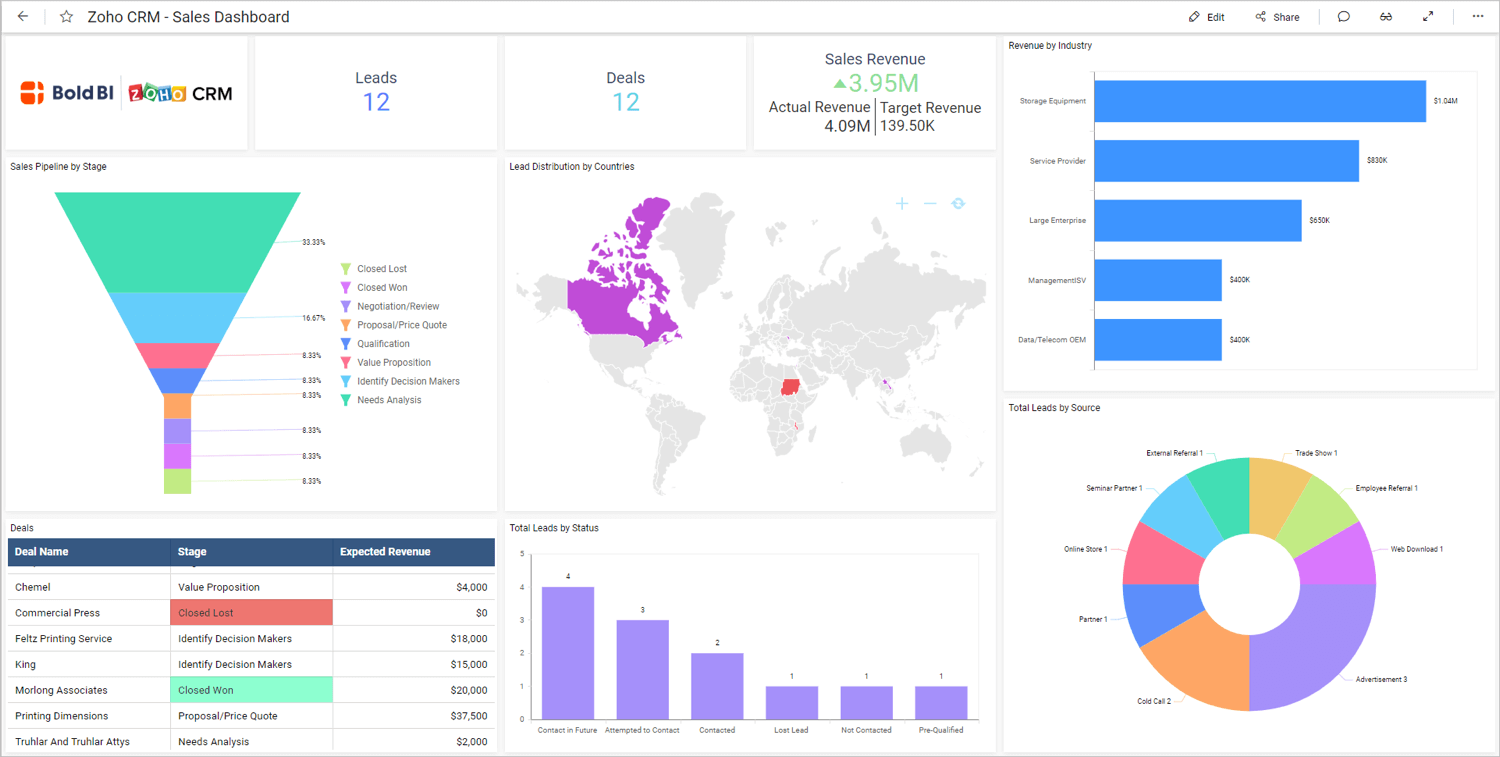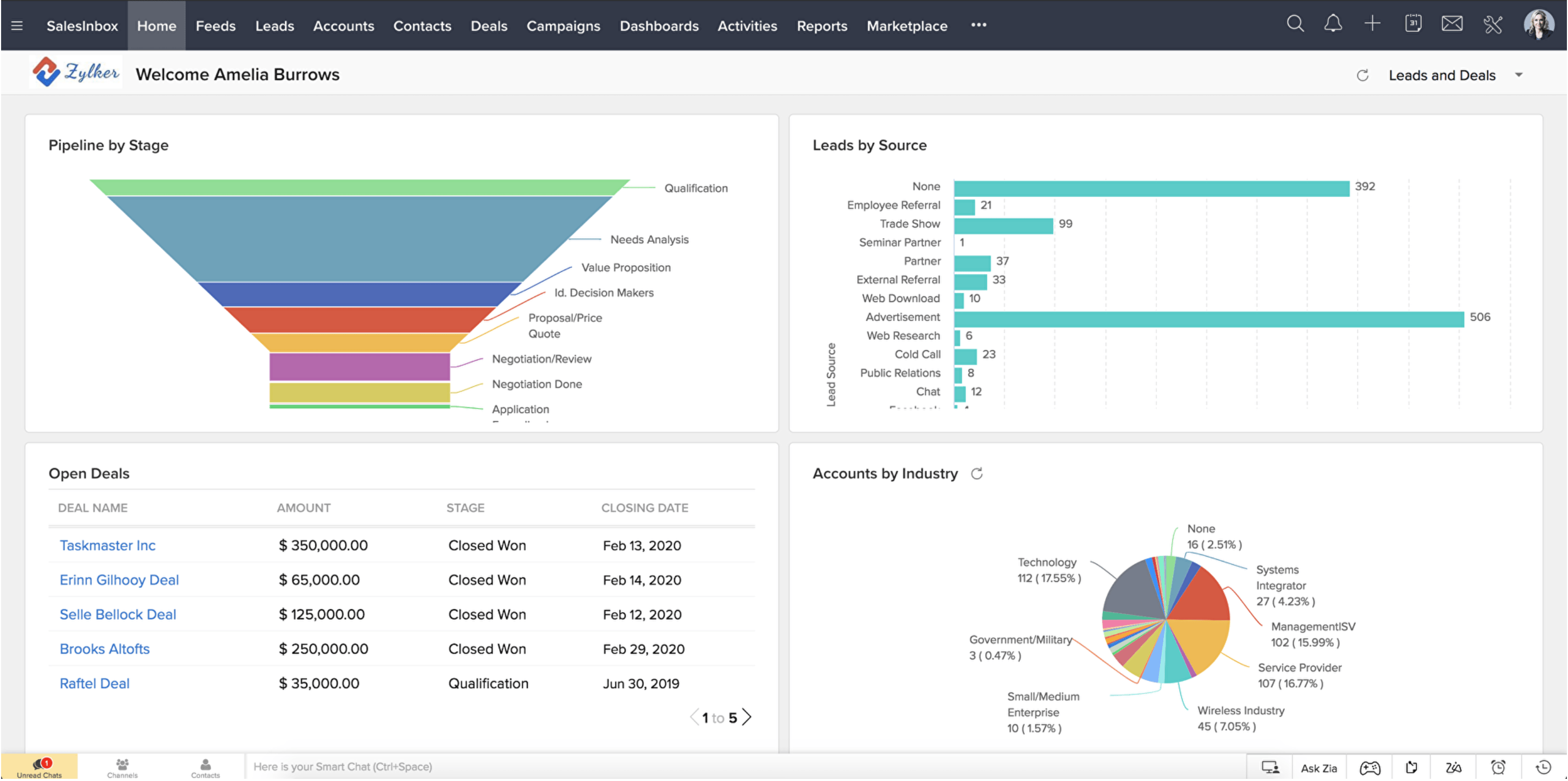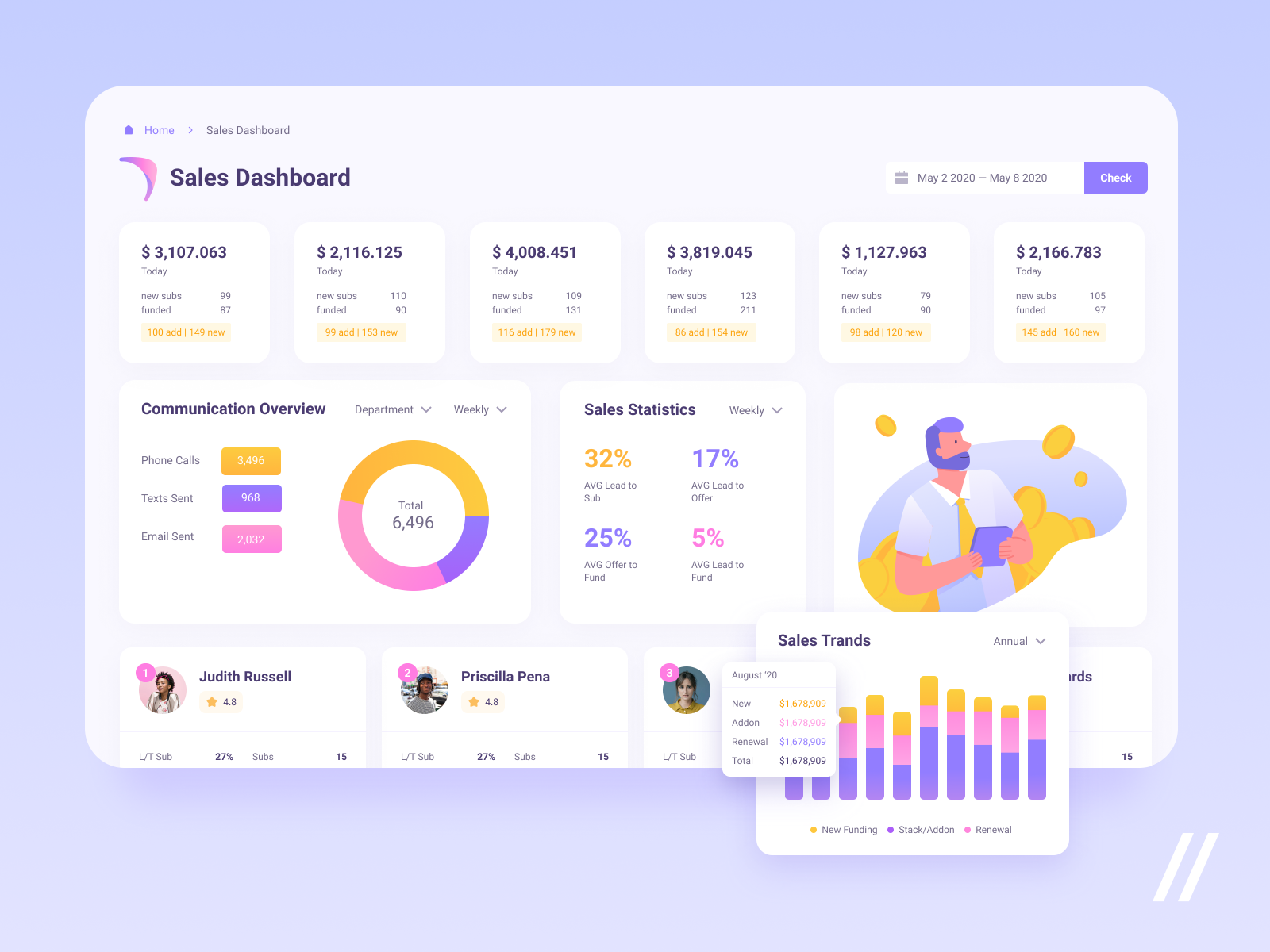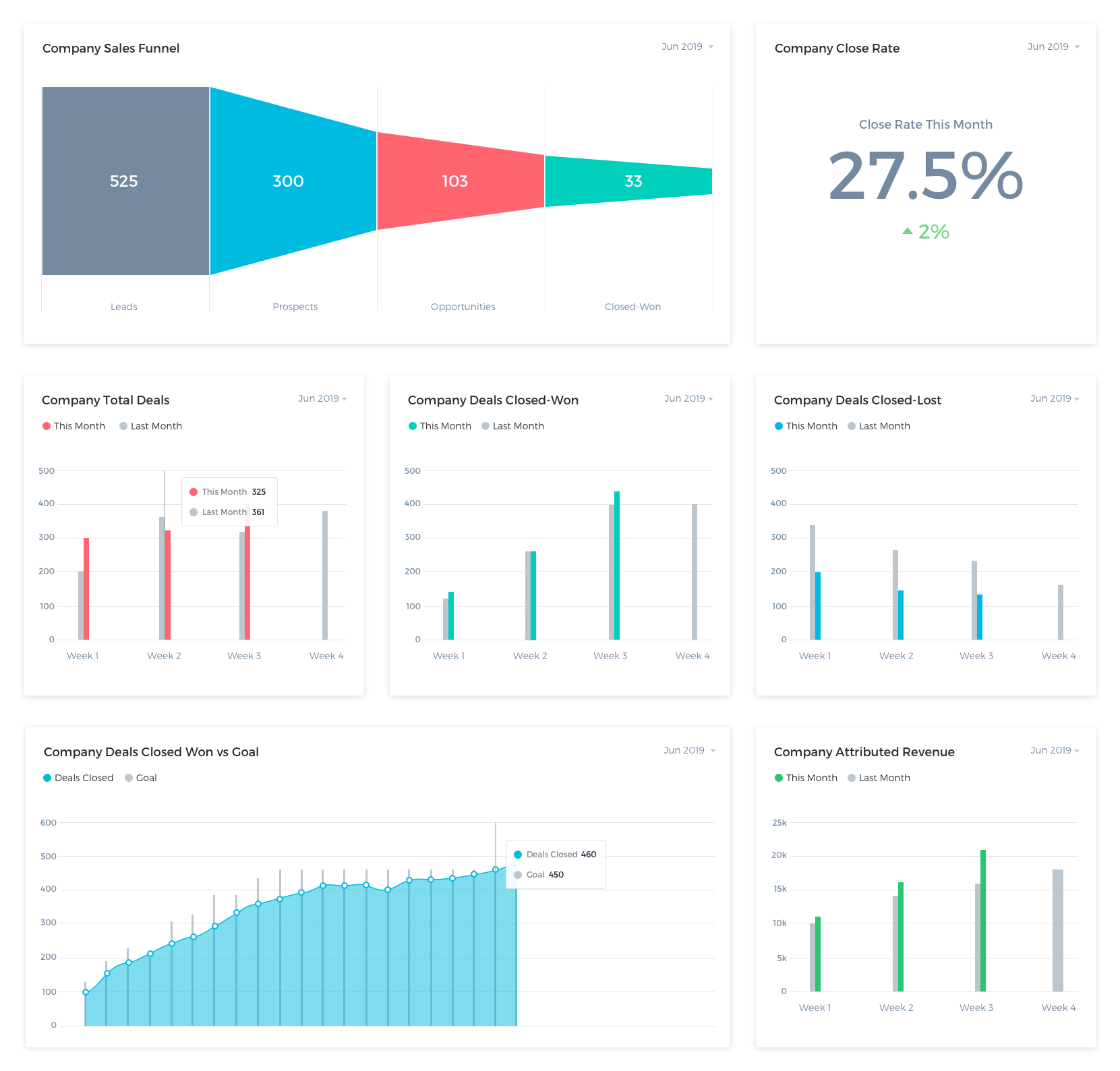The CRM sales dashboard, an invaluable tool for sales teams, empowers them with real-time data and analytics, enabling informed decision-making and enhanced performance. This comprehensive guide delves into the key components, customization options, and best practices for creating effective CRM sales dashboards that drive success.
By providing a clear and concise overview of the topic, this introduction effectively sets the stage for the detailed discussion that follows.
Key Performance Indicators (KPIs) for CRM Sales Dashboard
Key performance indicators (KPIs) are metrics that measure the effectiveness of sales teams. They provide insights into sales performance, identify areas for improvement, and help managers make data-driven decisions.
Common KPIs for CRM sales dashboards include:
- Sales volume: Total value of sales made over a specific period.
- Conversion rates: Percentage of leads that convert into customers.
- Customer lifetime value (CLTV): Total revenue generated from a customer over their lifetime.
Industry benchmarks for common KPIs vary depending on the industry and company size. However, some general guidelines include:
- Sales volume: Aim for a 10-15% increase year-over-year.
- Conversion rates: Strive for a conversion rate of at least 10%.
- CLTV: Target a CLTV that is at least three times the cost of customer acquisition.
By comparing performance against industry benchmarks, sales teams can identify areas where they need to improve and make necessary adjustments to their strategies.
Data Visualization and Presentation

Effective data visualization is crucial for presenting CRM sales data in a clear and understandable manner. Various techniques can be employed, including charts, graphs, and tables.
Charts are visual representations of data that display trends, patterns, and relationships. Common chart types include bar charts, line charts, and pie charts. Graphs, such as scatter plots and histograms, provide a more detailed analysis of data distribution and relationships.
Color Schemes and Fonts
Color schemes play a significant role in data visualization. Choose colors that are easy to distinguish and avoid using too many colors, as it can overwhelm the viewer. Fonts should be clear and readable, with appropriate font sizes and styles.
Layout and Design
The layout of the dashboard should be organized and intuitive, with clear labeling and headings. White space can be used effectively to separate different sections and improve readability. Consider using interactive elements, such as drill-down menus or filters, to allow users to explore the data further.
Customization and Personalization

Customizing CRM sales dashboards to meet specific user needs offers numerous benefits. It enables users to tailor their dashboards to align with their unique roles, responsibilities, and preferences. This can significantly enhance the user experience, making it easier for sales reps, teams, and managers to access the most relevant and actionable insights.
Creating Personalized Dashboards
Creating personalized dashboards involves defining the specific metrics, visualizations, and widgets that are most relevant to each user. This can be achieved by allowing users to select and arrange the desired elements on their dashboards. For instance, a sales rep may choose to prioritize metrics related to their individual pipeline, while a team manager may prefer a broader view of team performance.
Customizable Dashboard Features
To support customization, CRM sales dashboards should offer a range of customizable features, such as:
Drag-and-drop widgets
This allows users to easily add, remove, and rearrange widgets on their dashboards, ensuring they have quick access to the most important information.
Filter options
Filter options enable users to refine the data displayed on their dashboards based on specific criteria, such as time period, product category, or customer segment. This allows them to focus on the most relevant data for their specific needs.
Drill-down capabilities
Drill-down capabilities allow users to explore data in greater detail by clicking on specific metrics or visualizations. This provides deeper insights and enables users to identify the underlying reasons behind key trends or performance indicators.
Integration with Other Business Systems

Integrating CRM sales dashboards with other business systems, such as ERP and marketing automation platforms, is crucial for streamlining operations and enhancing data visibility across the organization. Data integration enables the seamless flow of information between different systems, providing a comprehensive view of customer interactions and sales performance.
Benefits of Data Integration, Crm sales dashboard
- Improved data accuracy and consistency:Data integration ensures that all systems are working with the same up-to-date information, reducing errors and inconsistencies.
- Enhanced data analysis and reporting:By combining data from multiple sources, businesses can gain a deeper understanding of customer behavior, sales trends, and overall performance.
- Automated workflows and processes:Data integration can trigger automated workflows, such as sending personalized emails or creating follow-up tasks, based on customer interactions.
Challenges and Best Practices
While data integration offers numerous benefits, it also presents challenges. Some common issues include:
- Data quality and standardization:Ensuring that data from different sources is clean, consistent, and standardized can be a challenge.
- Data security and privacy:Integrating systems requires careful consideration of data security and privacy regulations.
- Technical complexity:Data integration projects can be technically complex and require specialized expertise.
To overcome these challenges, businesses should follow best practices such as:
- Establish clear data governance policies:Define data standards, ownership, and access rights to ensure data quality and security.
- Use data integration tools:Leverage software and platforms that facilitate data integration and streamline the process.
- Involve IT and business stakeholders:Engage both technical and business teams to ensure that data integration aligns with business objectives.
Real-Time Data and Analytics

In today’s fast-paced business environment, access to real-time data and analytics is crucial for sales teams to stay ahead of the competition. CRM sales dashboards that incorporate real-time data provide numerous advantages, empowering sales teams with the insights they need to make informed decisions and respond swiftly to market changes.
Real-time analytics allow sales teams to:
- Monitor key performance indicators (KPIs) in real time:Track metrics such as sales pipeline, conversion rates, and customer churn to identify trends and areas for improvement.
- Identify sales opportunities:Real-time data can alert sales teams to new leads, customer interactions, and market shifts, enabling them to capitalize on opportunities as they arise.
- Personalize customer interactions:By accessing real-time customer data, sales teams can tailor their interactions to meet individual customer needs and preferences.
- Respond to customer feedback:Real-time analytics provide insights into customer sentiment, allowing sales teams to address concerns and improve customer satisfaction.
- Forecast sales and predict trends:Real-time data can be used to create predictive models that forecast sales performance and identify emerging trends, enabling sales teams to plan and adjust strategies accordingly.
Incorporating Real-Time Data
There are several ways to incorporate real-time data into CRM sales dashboards:
- API integrations:Connect your CRM system to external data sources via APIs to pull in real-time data from other applications, such as marketing automation platforms or social media monitoring tools.
- Streaming data feeds:Establish streaming data feeds to continuously receive real-time updates from external systems, such as website analytics or IoT devices.
- Custom development:Develop custom code to extract real-time data from specific sources and integrate it into your CRM sales dashboard.
By leveraging real-time data and analytics, sales teams can gain a competitive edge, optimize their performance, and deliver exceptional customer experiences.
Mobile Optimization
Optimizing CRM sales dashboards for mobile devices is crucial in today’s business environment. With the increasing use of smartphones and tablets by sales teams, it is essential to ensure that dashboards are accessible and easy to use on these devices.
Responsive dashboards that adjust to different screen sizes and orientations provide a seamless user experience, enabling sales teams to access critical information on the go.
Benefits of Mobile-Friendly Dashboards
* Enhanced Accessibility:Mobile-friendly dashboards allow sales teams to access real-time data and insights from anywhere, anytime.
Improved Productivity
By providing easy access to key metrics, mobile dashboards help sales teams make informed decisions and take immediate action.
Increased Collaboration
Mobile dashboards facilitate collaboration between sales teams and managers, enabling them to share insights and track progress remotely.
Enhanced Customer Engagement
Sales teams can use mobile dashboards to access customer information, track interactions, and respond to inquiries promptly.
Final Conclusion: Crm Sales Dashboard

In conclusion, CRM sales dashboards are essential for modern sales teams, providing a wealth of data-driven insights that empower them to make informed decisions, optimize their performance, and ultimately drive business growth. By embracing the best practices Artikeld in this guide, organizations can unlock the full potential of their CRM sales dashboards and gain a competitive edge in the dynamic business landscape.
FAQ Explained
What are the key benefits of using a CRM sales dashboard?
CRM sales dashboards provide real-time visibility into sales performance, enabling teams to track progress, identify trends, and make informed decisions. They also facilitate collaboration, streamline communication, and enhance overall sales efficiency.
How can I customize a CRM sales dashboard to meet my specific needs?
CRM sales dashboards offer customization options that allow users to tailor the dashboard to their unique requirements. This includes selecting relevant metrics, customizing visualizations, and creating personalized views for individual sales reps, teams, or managers.
What are the best practices for designing an effective CRM sales dashboard?
Effective CRM sales dashboards are designed with simplicity, clarity, and usability in mind. They utilize clear and concise visualizations, avoid clutter, and employ intuitive navigation to ensure that users can quickly and easily access the information they need.
